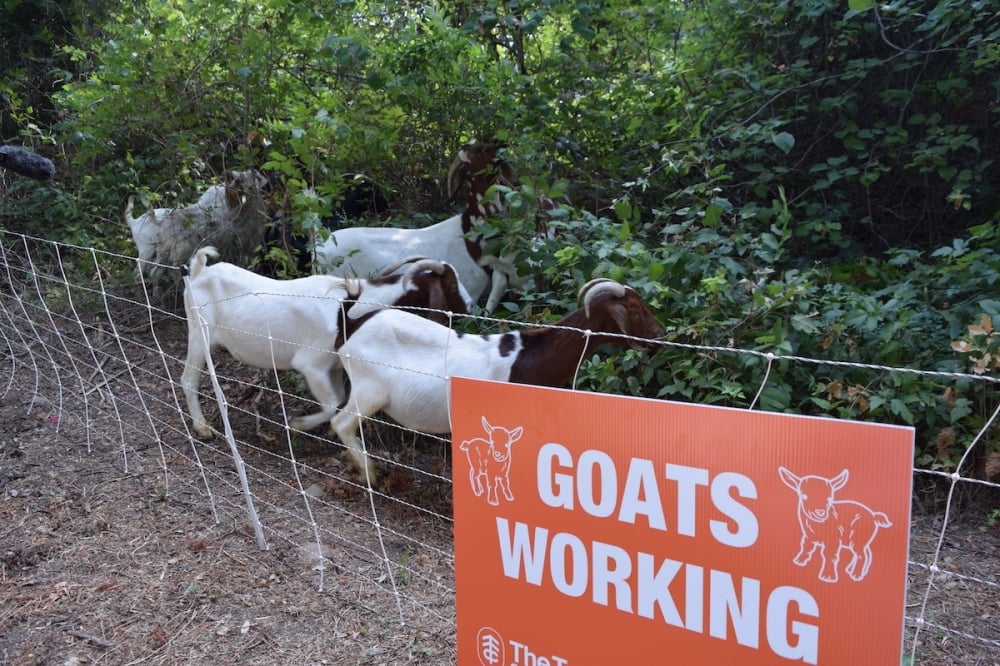The goats will stay at the trail day and night for the next three to four weeks, taking breaks to chew their cud and sleeping in their on-site trailers. Guests of the trail should not be affected, Anderson said, as the goats will remain in the vegetation and not on the dirt path.
Those visiting are asked to keep their pets on leashes and not touch the goats or the electric fencing while they work.
“It’s a little like being around a working therapy dog,” Anderson said. “It’s very tempting to want to pet them, but we ask that you do not do it.”
Anderson said she hopes once word spreads about the goats at the trail, TTC will be able to secure funding to continue the program throughout the trail. Additionally, she said when the goats have finished their work, TTC will use heavy mulch to prevent the germination of invasive plants in the future, and will replant the areas with native plants during the fall and winter months.
Those damn goats are takin our jerbs!!!

Controlled burns, which are another alternative to controlling invasive plants in the area, often lead to reduced air quality and can compact the soil, Anderson said
That’s kind of slanderous against controlled burns. There is reduced air quality while it’s burning, but the benefits can last years where the time of burning can last hours. I have not heard of compacting the soil as a drawback: a bit of Googling suggests that that’s a drawback of cutting with machinery instead. Furthermore, there are ecosystems that are adapted to having burns from time to time, so they can be useful if done right.
However, the article mentions poison ivy. Goats can not only eat it, they actively like it, and their bodies destroy the urushiol (the irritant) so their milk is safe. Furthermore, for a burn of poison ivy: some people did that upwind of my sister and a lot of other people on a military base, and the results were Not Good.


